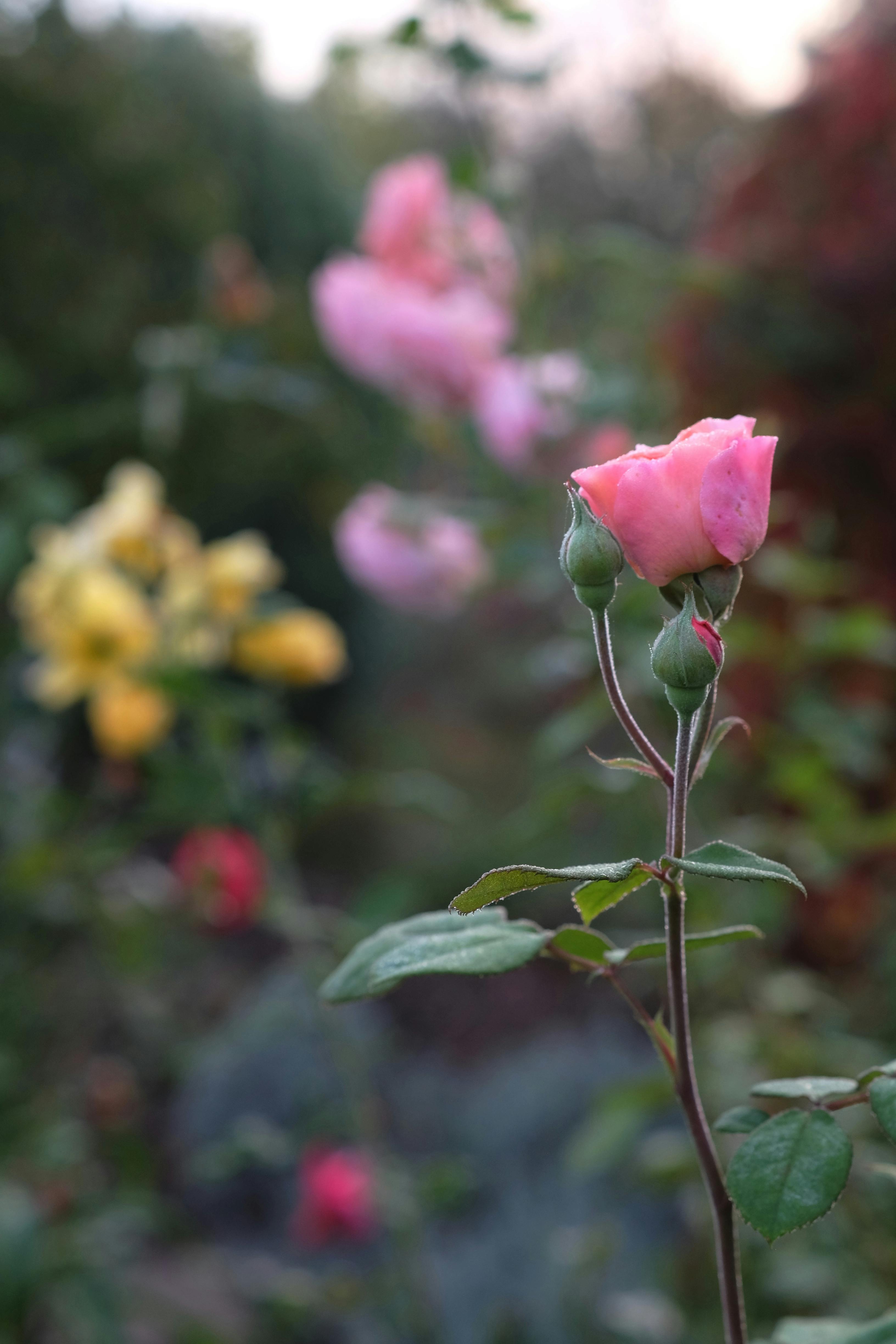Have you ever wondered how much water your plants actually need? It can be challenging to strike the perfect balance between overwatering and underwatering, but getting it right is crucial for the health and vitality of your green friends. In this article, we’ll explore the factors that determine the water requirements of different types of plants, and provide you with practical tips to ensure you’re giving your plants just the right amount of water to thrive. Get ready to become a plant watering expert!
Factors Affecting Water Needs
Plant Type
The type of plant you have plays a significant role in determining its water needs. Some plants, like cacti and succulents, are adapted to dry environments and require minimal watering. On the other hand, leafy greens and flowering plants usually need more frequent watering due to their higher water requirements.
Maturity
The age of your plants also affects their water needs. Young and newly planted seedlings often require more frequent watering as their root systems are not yet fully established. As plants mature and develop a more extensive root network, they become more efficient at absorbing water, and their watering needs decrease.
Climate
The climate in which you live has a significant impact on how much water your plants require. In hot and arid regions, plants tend to lose more moisture through evaporation, necessitating more frequent watering. In contrast, plants in cooler and humid climates may require less watering since the air retains more moisture.
Soil Type
The type of soil in your garden or container can influence how quickly water drains and how well it retains moisture. Sandy soils drain water rapidly and may require more frequent watering, while clay soils retain water for more extended periods. Understanding your soil type helps you adjust your watering schedule accordingly.
Season
Different seasons bring varying weather conditions that affect your plants’ water needs. During hot summer months, plants may require more frequent watering due to increased evaporation and higher temperatures. In colder seasons or during rainfall, you may need to reduce watering to avoid waterlogging the plants’ roots.
Determining Water Requirements
Visual Signs of Watering Needs
Observing your plants for visual signs can be a helpful indicator of their watering requirements. Look out for drooping or wilting leaves, as this indicates a lack of water. Similarly, dry or brittle soil could signal a need for watering. However, it’s important to note that different plants exhibit these signs differently, so it’s essential to know your specific plant’s characteristics.
Moisture Sensors
Using moisture sensors is a reliable way to determine when your plants need watering. These handy devices measure the moisture levels in the soil and provide real-time feedback. When the sensor indicates that the moisture level has dropped below a certain threshold, it’s time to water your plants. Moisture sensors are particularly useful for busy gardeners or when dealing with a large number of plants.
Monitoring Soil Moisture
Regularly monitoring the moisture levels in your soil is a crucial aspect of determining your plant’s watering needs. Simply inserting your finger an inch or two into the soil can give you a good indication of whether it’s dry or moist. If the soil feels dry, it’s time to water. However, if it feels damp, you can hold off on watering for a bit longer.
Checking Rainfall Levels
Keeping track of rainfall in your area is an important factor in determining when and how much to water your plants. If there has been a substantial amount of rainfall, you may not need to water your plants immediately. However, if rainfall has been sparse or nonexistent, it’s essential to supplement with watering to ensure your plants receive adequate moisture.

General Guidelines for Watering
Established Plants
Once your plants have become established, they generally require less frequent watering. Water them deeply, ensuring the moisture penetrates the soil and reaches the plant’s root system. Avoid shallow watering, as this encourages the development of weak surface roots.
Container Plants
Plants grown in containers often have different watering needs compared to those in the ground. Containers can dry out more quickly due to increased exposure to heat and wind. Water container plants thoroughly until water drains out of the bottom to ensure the entire root ball is moistened. Monitor moisture levels regularly and adjust your watering frequency accordingly.
Seedlings and Young Plants
Young plants and seedlings have delicate and vulnerable root systems that require careful watering. Water them gently and frequently to provide consistent moisture without overwhelming the young roots. It’s crucial to strike a balance between keeping the soil moist and avoiding waterlogged conditions that can lead to root rot.
Drought-Tolerant Species
Some plants are naturally adapted to drought-like conditions and have lower water requirements. These drought-tolerant species can withstand dry spells and require less frequent watering. Examples include lavender, yucca, and agave. However, keep in mind that even drought-tolerant plants will need watering during their initial establishment phase.
Watering Techniques
Watering at the Base
Watering plants at the base, near the root zone, is the most effective technique for delivering moisture to your plants. This method allows the water to directly reach the roots, where it is needed most. It also helps avoid wetting the foliage, which can lead to disease or fungal issues.
Avoiding Foliar Wetting
While it’s essential to water the base of your plants, it’s important to avoid wetting the foliage excessively. Wet leaves can encourage the development of fungal diseases, especially in humid climates. If you do accidentally wet the foliage, try to water in the early morning to ensure the leaves have time to dry before nightfall.
Irrigation Systems
Installing an irrigation system, such as drip irrigation or a sprinkler system, can simplify and automate the watering process. Drip irrigation delivers water directly to the root zone, reducing water waste and preventing foliage wetting. Sprinkler systems can be effective for larger areas but may not be as efficient as drip irrigation.
Hand Watering
Hand watering can be a great option for smaller gardens or when you want to have a more hands-on approach to caring for your plants. It allows you to control the amount and location of the water applied, ensuring each plant receives enough moisture. When hand watering, be sure to water deeply to encourage deep root growth.

Watering Frequency
Plant-Specific Needs
Each plant species has unique water requirements, so it’s crucial to research and understand the specific needs of your plants. Some plants may need watering every few days, while others may only require watering once a week or less. Plant-specific needs may vary based on factors such as size, age, and natural habitat.
Environmental Factors
Environmental factors, such as temperature and humidity levels, can influence how frequently you need to water your plants. During hot and dry weather, plants may require more frequent watering to compensate for increased water loss through evaporation. Similarly, indoor plants may need less water due to the controlled environment with lower evaporation rates.
Seasonal Adjustments
As the seasons change, so do your plants’ watering needs. During warmer months, plants typically require more water due to higher temperatures and increased growth. In colder seasons or during periods of reduced growth, you may need to scale back on watering to avoid oversaturating the soil.
Avoiding Overwatering
Overwatering can be just as detrimental to plants as underwatering. It can lead to root rot, nutrient deficiencies, and other issues. It’s important to allow the soil to dry slightly between watering to promote healthy root growth and prevent waterlogged conditions. Always monitor the soil moisture levels and adjust your watering schedule accordingly.
Proper Watering Practices
Morning Watering
Watering your plants in the morning is generally the best practice. Morning watering allows the plants to absorb the moisture before the heat of the day, reducing the risk of fungal diseases. Additionally, watering in the morning gives the plants ample time to dry before the cooler evening temperatures.
Consistent Watering
Consistency in watering is key to promoting healthy plant growth. Aim for a regular watering schedule, whether it’s every few days or once a week, to ensure your plants receive the consistent moisture they need. Avoid sporadic watering or allowing the soil to completely dry out between waterings, as this can stress the plants.
Deep Watering
Deep watering encourages the development of deep and robust root systems. When you water deeply, the moisture penetrates the soil, reaching the lower root levels. This helps the plant become more drought-tolerant and resilient. However, ensure the water penetrates evenly throughout the root zone and doesn’t create waterlogged conditions.
Mulching
Applying a layer of mulch around your plants can help conserve moisture and reduce water loss through evaporation. Mulch acts as a protective barrier, insulating the soil and maintaining a more consistent moisture level. It also helps suppress weed growth, which can compete with your plants for water and nutrients.

Alternatives to Traditional Watering
Drip Irrigation
Drip irrigation is an efficient and water-conserving method of delivering water directly to the root zone of your plants. This slow and precise system minimizes water waste and ensures the plants receive adequate moisture without wetting the foliage. Drip irrigation is especially beneficial for larger gardens or areas with multiple plants.
Self-Watering Containers
Self-watering containers are designed with a reservoir that holds water and wicks moisture up to the plant’s roots as needed. These containers provide a consistent water supply and help prevent overwatering or underwatering. They are particularly useful for busy individuals or those new to gardening.
Wicking Systems
A wicking system utilizes capillary action to deliver water from a reservoir to the plants’ roots. The plants’ roots draw up water through a wick or through a capillary mat, ensuring a continuous supply of moisture. Wicking systems can be tailored to suit different garden sizes and are especially useful for indoor plants.
Ollas
Ollas are unglazed clay pots buried in the soil, with the neck exposed above the ground. These porous pots slowly release water to the surrounding soil as the plant roots draw moisture as needed. Ollas can be a sustainable and low-maintenance option for watering plants, as they conserve water and reduce evaporation.
Effects of Underwatering
Wilting
One of the most noticeable effects of underwatering is wilting. When plants lack sufficient water, they are unable to maintain their turgidity, causing the leaves and stems to droop. Wilting is the plant’s way of conserving water and protecting itself from further water loss. If wilting is not addressed promptly, it can lead to more severe damage.
Reduced Growth
Underwatered plants often exhibit reduced growth or stunted development. Without adequate water, plants struggle to photosynthesize and produce energy for growth. This can result in smaller leaves, flowers, and fruits, as well as overall diminished plant health.
Nutrient Deficiencies
Water is essential for nutrient uptake in plants. Without sufficient water, plants may struggle to absorb essential nutrients from the soil, even if they are present in adequate quantities. Over time, underwatered plants may develop nutrient deficiencies, leading to yellowing or browning of leaves, poor flowering, and limited fruit production.
Stress and Disease Susceptibility
Underwatered plants are more susceptible to stress and disease. When plants are stressed due to lack of water, their immune systems become compromised, making them more vulnerable to pests and diseases. Stressed plants also have reduced resilience to changing environmental conditions.

Effects of Overwatering
Root Rot
Overwatering can lead to root rot, a condition where the plant’s roots become waterlogged and deprived of oxygen. Waterlogged roots are unable to perform their vital functions, such as absorbing nutrients and anchoring the plant. Root rot can cause the roots to decay, leading to yellowing leaves, wilting, and ultimately, the death of the plant.
Yellowing Leaves
Excessive watering can result in yellowing leaves, even though the root cause is not related to nutrient deficiencies. Overwatered plants often have a reduced ability to uptake nutrients, leading to leaf yellowing. This condition is known as chlorosis and can affect the plant’s overall vitality and productivity.
Fungal Diseases
Plants that are consistently overwatered are more prone to fungal diseases. Excess moisture creates an ideal environment for fungal growth, especially when combined with poor airflow or high humidity levels. Fungal diseases can manifest as leaf spots, powdery mildew, or root rot, and can be challenging to treat once established.
Poor Oxygen Levels
Overwatering can reduce the oxygen levels available to plant roots. When soil becomes waterlogged, it displaces air from the soil pores, preventing roots from accessing the oxygen they need for respiration. Without sufficient oxygen, root cells may die, and the plant’s overall health can decline.
Special Considerations
Plants in containers
Plants grown in containers have specific watering considerations. Container plants often require more frequent watering than those in the ground due to their limited soil volume. The smaller amount of soil dries out more quickly and allows for less water storage. Regularly monitor the moisture levels in container plants to prevent wilting or drought stress.
Indoor Plants
Indoor plants have their own unique watering needs, typically requiring less frequent watering than outdoor plants. The controlled environment indoors usually has lower humidity levels, reducing the rate of water evaporation. It’s essential to be mindful of the specific water requirements of each indoor plant species and adjust watering frequencies accordingly.
Xeriscaping
Xeriscaping is a landscaping technique that focuses on using drought-tolerant plants and water-efficient practices. By selecting plants that are adapted to your region’s natural rainfall patterns, you can minimize the need for supplemental irrigation. Xeriscaping also involves proper soil preparation, mulching, and implementing water-conserving irrigation systems.
Watering during extreme temperatures
During periods of extreme heat or cold, your plants’ water needs may increase or decrease accordingly. High temperatures and intense sunlight can cause water to evaporate more rapidly, necessitating more frequent watering. Similarly, during freeze events, plants may require extra watering to provide insulation and protect the roots from frost damage.
In conclusion, understanding the factors that affect water needs, determining the appropriate watering frequency, implementing proper watering techniques, and considering special considerations such as container plants or extreme temperatures are all crucial in maintaining healthy and thriving plants. By following these guidelines and paying close attention to your plants’ specific requirements, you can ensure they receive the optimal amount of water for their growth and overall well-being. Remember to consistently monitor your plants, make adjustments as needed, and enjoy the beauty and benefits of a well-watered garden.



